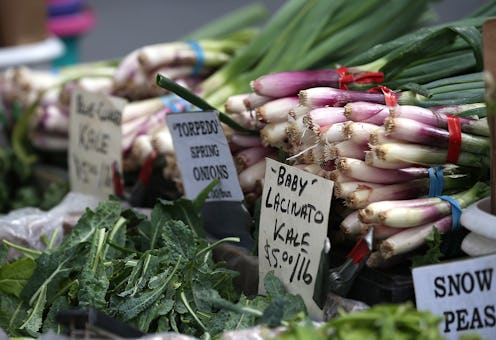Sometimes less is more, as is often the case when it comes to food additives — it's one of the season why we're all busy wondering how to eat clean. As the American food industry has evolved, processed foods have become the norm, with a majority of the foods on the market having been chemically altered and/or genetically modified. Unfortunately for many of us consumers, this has made grocery shopping something of a minefield. It’s hard to know when you’re going to buy an item that just so happens to include carcinogens, for example.
The more I learn about how food is produced and what it contains, the more dismayed I become. At the same time, the alternative has also seemed daunting. Wanting to eat better is a lot more straightforward than actually doing it. It's hard to even know where to draw lines and how to go about cutting back on or dropping unprocessed foods.
Through extensive research and a year of denying herself processed foods, food writer Megan Kimble has shed light on how exactly we can go about eating better. Her new book, Unprocessed: My City-Dwelling Year of Reclaiming Real Food , finally makes it seem, well, not easy, but more doable. The lessons that she shares show how we can go about eating real food — without turning our lives completely upside down.
Here are seven ways to eat cleaner, inspired by Kimble’s Unprocessed:
Establish Parameters
If you’re intrigued by the idea of cutting back on unprocessed foods, but you’re not sure you’re ready to eliminate them entirely, it’s OK to test the waters. Definitions of what’s processed and what’s not can vary, so it’s up to you how you want to do it. Whether you want to stick to it one day a week or go for seven, that’s your prerogative. Think about what you hope to get out of it and go from there in setting your parameters.
Shop at Smaller Stores
Supermarkets are full of food meant to entice you, and sadly the majority of what they offer is processed. Smaller shops, especially food co-ops or natural foods stores, tend to have a larger selection of unprocessed goods. You may have to spend a bit more, but if you can swing it, rest assured that your spending will be making a statement about the importance of real food.
Read Labels
Processed foods tend to have long lists of ingredients, laden with unfamiliar words. Typically, the smaller the list, the better. You’ll also want to try to stick to ingredients you can actually identify. Luckily, there are apps that can assist you with that, too. With the help of the Internet, you can get a better sense of what you’re consuming.
Eat More Fresh Produce
Produce is so great, it doesn’t even need an ingredients label. Organic or not, increasing the amount of it in your diet will help you cut back on additives by (in theory) replacing some of the more processed foods that you typically eat. Go organic to avoid GMOs, decrease your exposure to pesticides, and possibly reduce your cancer risk.
Dine In More
Depending on where you live, it may be difficult to find restaurants that can cater to your dietary restrictions. If you do your research before going out and aren’t afraid to ask questions, you’ll have better luck; nonetheless, you’ll likely find yourself eating more meals at home. It doesn’t have to be a bad thing. In fact, it might inspire you to try new recipes.
Cook Bigger Batches
Processed meals, especially those oh-so convenient packaged ones, are less of a time investment in a lot of cases than preparing an unprocessed one. When you do cook, try preparing extra servings so you’ll have leftovers to refrigerate or freeze. This will save you time down the road.
Join Forces With Others
If you have friends or family willing to go unprocessed with you, take advantage of it. Not only will they be great moral support, you can share potluck-style meals, divvying up the cooking responsibilities. If no one’s up for it, you can still try to sweet talk them into teaming up for a single meal every once in a while.
Images: Giphy (7)
